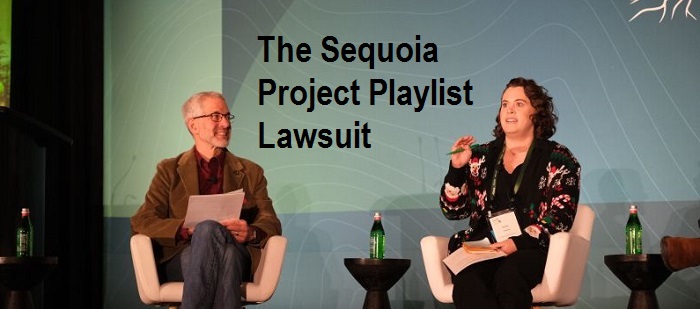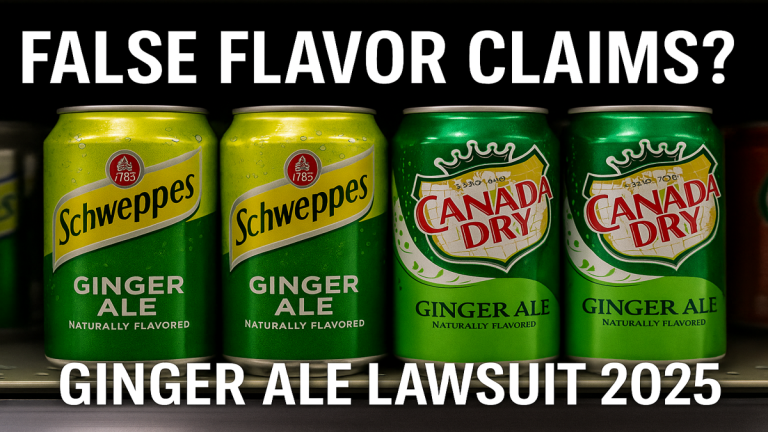The Kindig-It lawsuit has become a major topic among custom automotive fans. Many people search for clear information about the disputes involving Kindig-It Design and its owner, Dave Kindig. The topic draws attention because the shop appears on national television. The lawsuits raise questions about contracts, customer expectations, intellectual property rights, and the challenges inside the custom car world. This article explains every important detail clearly and factually. It also breaks down legal claims, timelines, responses, and the broader industry impact.
Understanding Kindig-It Design and Its Reputation
Kindig-It Design stands out as a high-end custom car shop in Salt Lake City. Dave Kindig leads the company. His work gained national recognition through the television show Bitchin’ Rides. The shop handles expensive builds that often require thousands of labor hours. Many customers admire the craftsmanship. The company built a brand around creativity, quality, and custom fabrication.
The attention brought success. It also attracted scrutiny. High-cost projects create high expectations. Large deposits, long timelines, and complex builds increase risks. These factors help explain why claims surfaced and why the Kindig-It lawsuit drew so much attention.
Why the Kindig-It Lawsuit Became a Public Topic
Interest in the lawsuits grew due to two major events.
First, an intellectual property case involved Kindig-It and outside companies that allegedly copied branded parts.
Second, a group of clients filed a lawsuit after a custom 1974 Dodge Charger project stalled. These clients claimed significant losses.
Both situations created headlines. The public wanted answers. People wondered if the shop faced serious legal trouble. Fans asked how these issues affected the show and the company’s future. The controversies spread across blogs, forums, news sites, and social media.
Overview of the Lawsuits Related to Kindig-It Design
Two legal matters drive most searches:
- The intellectual property case involving Creative Controls
- The custom-build dispute involving a large group of chiropractic professionals
Both are separate cases. They involve different claims and different timelines. Understanding each case helps eliminate confusion. Many online articles mix them together. That mistake creates misinformation. The sections below separate the cases and explain them clearly.
The Intellectual Property Case
Background of the Patent and Copyright Dispute
The first known legal conflict focused on intellectual property. Kindig-It Design sued Creative Controls and several related companies. The complaint claimed these companies sold parts that closely resembled Kindig-It designs. The case included allegations of unauthorized use of Kindig-It images in promotional content.
Intellectual property disputes can become complex. Custom parts often involve unique shapes and engineering choices. Designs may qualify for patent protection. Photos may qualify for copyright protection. Kindig-It believed its protected work was used improperly.
Key Elements of the IP Case
The case involved several important issues:
- Patent infringement
- Copyright infringement
- Use of Kindig-It promotional content
- Distribution of disputed parts
- Cross-state commercial activity
Kindig-It argued that the defendants profited from designs that belonged to the company. This type of legal claim is common in the automotive market. Many shops sell custom parts. Competitors sometimes attempt to replicate popular components. These situations often result in legal action.
Responses and Court Actions
Creative Controls requested that the court dismiss the case. The company challenged the Utah court’s authority over an out-of-state business. It also attempted to dismiss the claims on other procedural grounds.
The court reviewed arguments and issued several rulings. Some requests were accepted. Some were rejected. The case continued for a period before both parties reached a settlement.
Outcome of the Intellectual Property Case
Public reports indicate that the case ended through a confidential settlement. Creative Controls agreed to pay an undisclosed amount. The company also stopped selling the disputed products. This conclusion avoided a full trial. It provided closure on one of the earliest legal matters involving Kindig-It.
This case showed that Kindig-It takes its designs seriously. Protecting custom parts remains essential for a high-end fabrication shop. Many builders face similar challenges. Unique designs often attract imitation. Legal action helps protect a brand’s creative work.
The 1974 Dodge Charger Lawsuit
How the Dispute Started
A second lawsuit gained national attention due to its scale. A large group of chiropractic and wellness professionals hired Kindig-It to build a custom 1974 Dodge Charger. The project involved a detailed design plan and a high final cost. The clients invested a large sum before the build progressed.
The clients claimed the project stalled for an extended period. They stated they received only limited updates. The car remained far from completion. The group alleged that they paid significant deposits without receiving the expected progress.
Claims Made in the Lawsuit
The lawsuit against Kindig-It included several claims:
- Misrepresentation of project timelines
- Failure to complete major build stages
- Lack of communication
- Delayed delivery
- Breach of contract
- Emotional distress tied to financial losses
The plaintiffs said that the delays and lack of progress caused financial harm. They also stated that they lost opportunities that depended on the completed vehicle.
Kindig-It’s Reported Response
Kindig-It denied acting unlawfully. The company pointed to industry-wide challenges. Many custom shops faced material shortages and supply delays during the pandemic. Complex builds often require unique parts that become difficult to locate or fabricate.
The company also pursued mediation efforts. It attempted to resolve the dispute without extended litigation. Legal teams for Kindig-It argued that delays were not caused through intentional misconduct.
Current Status of the Build-Project Case
Reports suggest the case continues without a final verdict. Court filings are not widely available through public databases. The details mostly appear in legal summaries and industry articles. No confirmed ruling states that Kindig-It committed fraud. The case appears to remain in stages such as negotiation or discovery.
Why These Cases Matter to the Custom Car Industry
Impact on Custom Builders
The Kindig-It lawsuit highlights common challenges in the custom automotive world. Large builds often require years. Custom parts take time. Clients sometimes underestimate the scale of the work. Builders sometimes underestimate the time needed. Misalignment creates conflict.
These lawsuits revealed how important it is to maintain clear communication. High-end customers pay significant amounts. They expect detailed updates. Shops must protect themselves through transparent contracts. Clients must understand realistic timelines.
Lessons for Customers
Clients can use these events to shape expectations:
- Request detailed build plans
- Confirm timeline estimates
- Understand required deposits
- Examine refund policies
- Ask for milestone-based payments
- Track progress through updates or photos
These steps reduce misunderstandings. They also help maintain a clear relationship between the client and the builder.
Lessons for Custom Shops
Shops benefit from improved documentation. Written agreements should explain:
- Scope of work
- Planned timeline
- Deposit terms
- Approvals for changes
- Communication methods
- Delays caused through external factors
Clear expectations protect both sides.
Timeline of Key Events
| Year | Event | Notes |
|---|---|---|
| 2014 | IP lawsuit filed against Creative Controls | Kindig-It claimed design and image infringement. |
| 2015–2016 | Court rulings issued | Motions addressed jurisdiction and claims. |
| 2016 | IP case settled | Creative Controls reportedly paid and ceased sales of disputed parts. |
| 2019 | 1974 Dodge Charger project started | Group of chiropractic professionals hired Kindig-It. |
| 2020–2021 | Build delays reported | Supply shortages slowed industry progress. |
| 2022 | Lawsuit filed over Charger project | Plaintiffs alleged delays and misrepresentation. |
| 2023–2025 | Case updates reported | Lawsuit appears active. No official final ruling found. |
Public Reaction and Media Coverage
How Blogs and News Sites Covered the Cases
Many online outlets covered the Kindig-It lawsuit. Legal blogs analyzed claims. Automotive sites focused on what it meant for the show. Fan forums discussed speculation about the company’s future.
Some articles provided factual timelines. Others repeated rumors without evidence. Confusion arose because two unrelated lawsuits were often merged into one narrative.
How Social Media Responded
Social media amplified the controversy. Viewers shared concerns about the shop’s reputation. Supporters defended the company. This mixed response created viral interest in the story.
Social media attention often magnifies legal disputes. Kindig-It faced intense scrutiny because the brand is tied to a public television program. Viewers wanted clear answers. Few cases provide complete information early in the process. This gap encouraged speculation.
The Ongoing Effects on Kindig-It Design
Reputation Management
The company still appears active. Recent updates and public appearances show normal operations. The lawsuits caused attention. They did not shut down the business. Some articles claim the shop faces challenges. Others say operations continue at a strong pace.
Future Legal Outcomes
The intellectual property case is closed. The 1974 Dodge Charger case continues. The final decision will determine how the dispute ends.
Future developments may include:
- Settlement before trial
- Court ruling
- Dismissal
- Additional mediation efforts
Legal outcomes depend on evidence, testimony, and documentation.
How the Kindig-It Lawsuit Shapes Future Projects
Clients investing large sums expect accurate timelines. Shops must balance artistry and deadlines. These lawsuits highlight the gap between expectations and reality.
Industry Trends Influenced Through the Case
The lawsuits encouraged:
- More transparent contracts
- Improved project management structures
- Enhanced communication strategies
- Better milestone reporting
- Greater attention to legal protection
Custom builders now highlight realistic timelines. Customers now research shop histories more thoroughly.
Conclusion: What the Kindig-It Lawsuit Reveals About the Custom Automotive World
The Kindig-It lawsuit offers important lessons for builders and clients. The intellectual property case showed the value of protecting creative designs. The 1974 Dodge Charger dispute revealed the challenges behind complex custom builds. Both cases shaped public conversation about expectations, timelines, and communication.
The lawsuits gained attention because Kindig-It operates on a national stage. Many fans followed the developments closely. Some details remain unresolved. Others reached quiet settlements. The long-term impact depends on future legal results and how the shop manages client relationships.
This article helps readers understand the facts. It also clarifies how such disputes arise in high-end automotive work. The legal matters surrounding the Kindig-It lawsuit encourage better planning, stronger contracts, and clearer communication in the custom car community.
FAQs About the Kindig-It Lawsuit
What started the Kindig-It lawsuit?
The lawsuit began after clients claimed a custom 1974 Dodge Charger project stalled. They stated the project progressed slower than expected and caused financial harm.
Did Kindig-It commit fraud?
No court ruling confirms fraud. All fraud claims remain allegations. The case appears ongoing without a final judgment.
Is the Charger lawsuit resolved?
Public reports suggest it remains active. No official outcome appears in widely available court filings.
Why do custom car disputes happen?
High-end builds require long timelines, rare parts, and large budgets. Delays sometimes lead to contract conflicts.
What did Kindig-It say about the allegations?
Kindig-It denied wrongdoing. The company mentioned industry-wide delays and supply problems. It also sought mediation.
Are more lawsuits against Kindig-It confirmed?
Some blogs mention more disputes. No documentation confirms additional major lawsuits.




